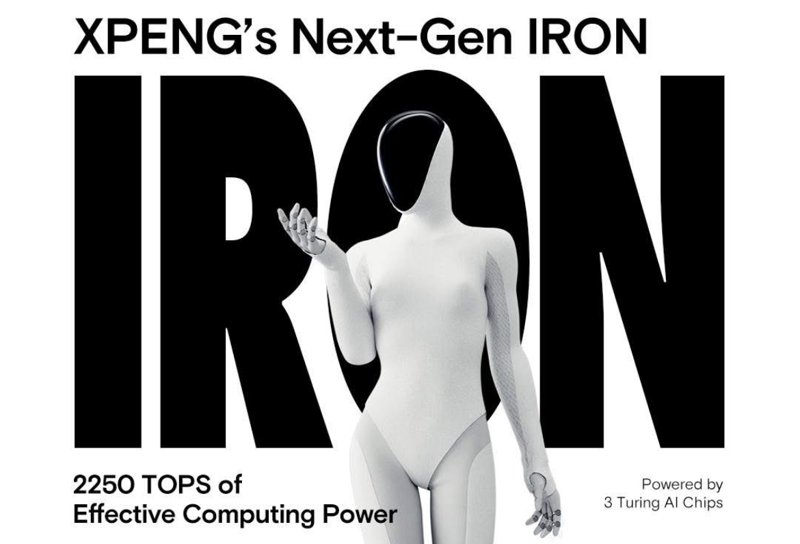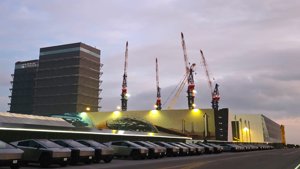Overview
To understand XPeng Inc., one must look past the electric cars. While the company first gained fame as a slick EV manufacturer in a hyper-competitive Chinese market, its true identity is that of a burgeoning AI and robotics powerhouse. Founded in 2014, XPeng’s mission was never just to build a “better Tesla,” but to leverage vehicles as a platform for developing and deploying advanced artificial intelligence. Today, that mission has expanded into a multi-front assault on the future of automation.
Led by software mogul He Xiaopeng, the company is aggressively channeling its resources into what it calls “Physical AI.” This vision encompasses three core domains: the XNGP autonomous driving system that aims to turn cars into robotaxis, the AeroHT subsidiary that is already mass-producing flying cars, and the recently unveiled IRON humanoid robot, designed for both factory and domestic work. XPeng isn’t just building products; it’s building an ecosystem of intelligent machines, powered by its own custom Turing AI chips. The cars are merely the first step.
Key Points
- Core Identity: An AI and robotics company focused on “Physical AI”—the integration of advanced AI into physical machines.
- Founded: 2014, with a pivot towards software and AI leadership under Chairman and CEO He Xiaopeng since 2017.
- Headquarters: Guangzhou, China.
- Primary Focus: Development of autonomous systems, humanoid robots, and aerial mobility solutions.
- Key AI Technology: Turing AI Chips, proprietary processors designed to power high-end AI models for its entire product ecosystem.
- Robotics & AI Divisions:
- Autonomous Driving (XNGP): An advanced driver-assistance system that forms the basis for a robotaxi service launching in partnership with Alibaba’s Amap.
- Humanoid Robot (IRON): A highly advanced, bipedal robot powered by Turing chips, with mass production slated for late 2026.
- Flying Cars (AeroHT): A subsidiary that began mass production of its modular “Land Aircraft Carrier” eVTOL in late 2025.
- Foundational Business: A successful but highly competitive Smart EV division that serves as the R&D and data-gathering platform for its AI ambitions.
- Major Backing: Publicly traded (NYSE, HKEX) with significant investments from Alibaba and Volkswagen Group, validating its technological prowess.
The Software-First Vision of He Xiaopeng
To understand XPeng, you have to understand its leader. The company’s story truly began when He Xiaopeng, the billionaire co-founder of UCWeb (which he sold to Alibaba), came aboard in 2017. He is not a car guy; he is a software and AI guy, and it shows. He took the wheel as Chairman and CEO, injecting a software-first ethos into the company’s veins and setting it on a trajectory far beyond typical auto manufacturing. This was never going to be another legacy automaker awkwardly bolting an iPad to a dashboard.
His vision extends past four-wheeled conveyances to a future of “multidimensional mobility” and “Physical AI.” This philosophy drives the company’s heavy R&D investment in building its entire technology stack from the ground up, from custom silicon to autonomous systems. He Xiaopeng is playing a long game, betting that owning the core AI technology will be the ultimate differentiator in the coming age of automation.
“Our exploration of more efficient, safer, carbon-neutral mobility solutions goes far beyond just smart EVs,” He Xiaopeng has stated, signaling the company’s broader ambitions.
Core Focus: AI and Robotics
XPeng’s primary mission is the development and deployment of intelligent machines. The company has structured its innovation into three key pillars, all powered by its in-house AI development.
The Brain: Turing AI Chips and Autonomous Driving
The foundation of XPeng’s intelligence is its proprietary Turing AI chip, a 40-core processor designed to handle the immense computational load of modern AI. With 750 TOPS of power per chip, XPeng is developing its own large AI models for its core product: the XNGP (Navigation Guided Pilot) autonomous driving system. This advanced driver-assistance system is one of the most capable in China and serves as the foundation for the company’s next venture: a robotaxi service, set to launch in 2026 in partnership with Alibaba’s Amap. This initiative aims to transform XPeng’s vehicles into fully autonomous agents.
The Body: The IRON Humanoid Robot
At its 2025 AI Day, XPeng unveiled its most direct foray into robotics: IRON, a remarkably lifelike humanoid robot.
- Anatomy: Standing under 170cm, IRON features a biomimetic spine, over 60 articulated joints, and flexible synthetic skin, allowing for human-like fluidity of movement.
- Intelligence: It is powered by three Turing AI chips (for a combined 2,250 TOPS), enabling it to process natural language, navigate complex environments, and perform dexterous tasks.
- Application: After a stunning live demonstration where CEO He Xiaopeng cut away its “flesh” to prove it wasn’t a human in a suit, the company announced plans to mass-produce IRON by late 2026. It is already being trialed on XPeng’s factory floors, with a long-term vision for deployment in service and domestic roles.
The Wings: AeroHT and the Flying Car
The most audacious expression of XPeng’s vision is AeroHT, its flying car subsidiary. In late 2025, the division moved from prototype to reality by commencing mass production of the “Land Aircraft Carrier.” This is a modular system: a six-wheeled ground vehicle that transports a detachable two-seater eVTOL (electric vertical take-off and landing) aircraft. With over 6,000 pre-orders and a dedicated factory, AeroHT is no longer a science-fiction project but a commercial venture, aiming to deliver its first units by late 2026.
The Foundational Business: Smart EVs
For all its futuristic ambitions, XPeng’s operations are grounded in the harsh reality of the Chinese EV market. Its lineup of stylish EVs, including the G9 SUV and P7 sedan, serves two critical purposes: generating revenue and acting as a massive data-gathering fleet for its AI models. The EV business is the foundation upon which the AI and robotics empire is being built.
The company’s biggest coup in this area was securing a $700 million investment from Volkswagen Group in 2023. As part of the deal, VW will use XPeng’s platform to build its own EVs for the Chinese market. This is a monumental vote of confidence in XPeng’s underlying technology and provides a much-needed cash infusion to fuel its more ambitious robotics and AI projects.
Verdict
XPeng is, without a doubt, one of the most interesting stories in robotics today. It has successfully built a brand on the back of impressive technology, but its true product isn’t the car—it’s the intelligence inside it. The Volkswagen partnership validates its engineering, but the company’s focus is clearly elsewhere.
Its ambition is now its greatest test. XPeng is fighting a three-front war: a brutal price war in the EV market, a race to commercialize flying cars with AeroHT, and a push into the nascent humanoid robotics space with IRON. All three are incredibly capital-intensive and fraught with risk. The debut of the IRON robot and the launch of the robotaxi service confirm that XPeng’s vision extends beyond mobility to automated labor and services, placing it in direct competition with a new class of robotics-focused ventures.
Ultimately, XPeng is no longer just betting on a multidimensional future; it is building the assembly line for it. It’s a company for tech optimists who believe the answer to traffic is to fly over it, while a robot makes them coffee. The world is watching to see if they can profitably manufacture not just cars, but flying cars and humanoid robots. The question is no longer if your car will drive itself—it’s whether a robot will be there to greet you when you land.






